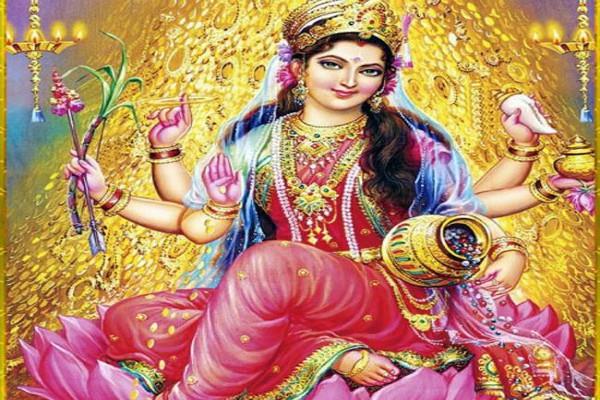The festival of Divali brings us the universal message of light, enlightenment and empowerment that transforms spiritual darkness to self-illumination and spiritual evolution. Representing such qualities is Lakshmi Maataa, the deity that is primarily worshipped during this auspicious festival. According to Hindu scriptures, this aspect of Divinity emerged from the ksheer-sagar, the ocean of milk that was churned thousands of years ago. Far from being a mere allegory, the appearance of Lakshmi Maataa provides direction to spiritual aspirants as we journey on the path of true enlightenment.
Lakshmi is referred to as the shakti of Bhagavan Vishnu, the sustaining aspect of Divinity. Shakti is power or energy in both its static and dynamic forms. It is that force that guides the creation, sustenance, destruction and re-absorption of all life. In humans, this shakti is present as the energy of will, knowledge and action. Devi symbolises the higher Self, the state of positive qualities, purity, awareness and spirituality. She is Chid Shakti or pure consciousness. As Durga Devi, she is Iccha Shakti, the willpower that transcends our negative qualities and as Saraswati Devi she is Kriyaa Shakti or right activity. As Lakshmi Devi, she symbolises Gyaan Shakti; through Her we earn the wealth of knowledge.
Lakshmi Devi is portrayed as standing on the lotus flower with coins flowing from her hands. The intense churning of the unconscious and the sincere worship of Lakshmi Devi grants one the wealth of knowledge that leads to spiritual evolution. Such a sacrifice brings a level of affluence that surpasses mere material acquisition. Just as Lakshmi Maataa emerged from the churned ocean, the seeker’s sacrificial efforts bring the shat sampat or the six forms of wealth that result in a greater awareness of the energy of knowledge within us. These forms of wealth are: faith, serenity, endurance, tranquillity, control of the senses and renunciation of selfish actions and desires.
Mt. Mandrachal played a significant role in the churning of the ocean as it was placed in the ocean of milk while Bhagavan Vishnu assumed the form of Koorma, the tortoise that churned it. Metaphysically interpreted, Mandrachal symbolises the mountain of mental advancement while Koorma is indicative of resilience, firm belief in principles and unbroken belief in dharma. When we pursue the path of intense churning within, we are lifted from the state of spiritual indigence to the richness of inner light. Our belief is strengthened and the willingness to perform positive action creates beautiful adornments in our lives. Indeed, we become illuminated gems of Lakshmi Maataa, reflecting the wealth of knowledge. Our light shines from within and we become a source of empowerment and illumination to others.
Celebrations of Divali should encourage us to direct our vision towards the light that illumines. Churning the unconscious within and following the injunctions of worship of the Divine kindles the light in us. Armed with such brilliance we will be able to burn away the forces of negativity and radiate light unto all around us.



